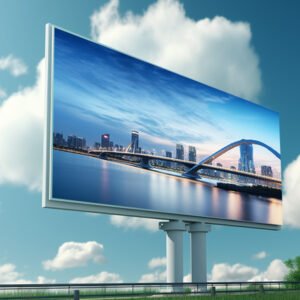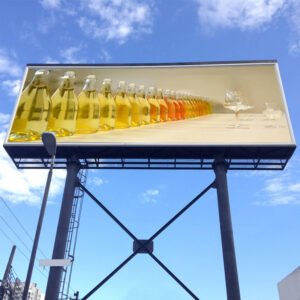Have you ever been intrigued by the impressive lifespan of LED displays, theoretically lasting up to 100,000 hours? However, practical experiences often diverge from these optimistic estimates. In this article, we will unveil the truth about the lifespan of LED displays and offer actionable tips to enhance their longevity.

Common Misunderstandings About LED Displays
While manufacturers typically advertise LED display screens with a near 100,000-hour lifespan, achieving such longevity in real-world usage is uncommon. Several critical factors influence the lifespan of LED displays, including production environment, quality of raw materials, and operational maintenance.

Key Factors Affecting the Lifespan of LED Displays
Quality of Raw Materials
LED Lamp Beads: The core elements of LED displays are the lamp beads; their quality directly influences brightness, color accuracy, and overall lifespan. High-quality lamp beads ensure brighter displays, reduced internal aging rates, wider viewing angles, and superior color consistency. This translates to a visually stunning and reliable display.
Driver IC: The driver integrated circuit (IC) plays a pivotal role in regulating the brightness and color of the LED lamp beads. Its performance substantially impacts both the display effect and the expected lifespan of the display.
Power Supply: A reliable power supply provides a consistent operating voltage crucial for the stability and longevity of the LED display.
Production Process
SMT Mounting Technology: Surface Mount Technology (SMT) is essential for the production of LED displays, ensuring high-quality PCB soldering.
Packaging Process: Effective packaging directly influences the waterproof capabilities and overall durability of the display.
Usage Environment
Temperature: Extreme temperature fluctuations can adversely affect LED lamp beads’ lifespan. High temperatures may accelerate aging, while low temperatures can diminish brightness.
Humidity: Environments with excessive humidity can lead to circuit board corrosion, destabilizing the display’s functionality.
Heat Dissipation: Proper lamp bead placement is vital for optimal heat dissipation, as poor management can hasten aging.
Operational Method
Static Image Display: Prolonged display of static images can accelerate localized aging of LED lamp beads.
Brightness Settings: Operating at excessive brightness levels can significantly shorten the life of the LED lamp beads.
Strategies to Extend the Lifespan of LED Displays
Choose a Trusted Brand: Opt for Jeryo LED products, renowned for advanced production techniques and rigorous quality control, ensuring reliability and durability.
Professional Installation: Engage a qualified installation team for swift connections and to mitigate troubleshooting issues.
Regular Maintenance: Frequently clean the screen surface, check connection integrity, and promptly replace any damaged components.
Prudent Usage: Minimize the display of static images, adjust brightness settings periodically, and reduce operating currents when possible.
Optimal Environment: Maintain good ventilation around the display and regularly clean the underside.
Lightning Protection: Implement lightning protection measures to shield the display from electrical surges during storms.
Conclusion
The lifespan of LED display screens is influenced by multiple factors. By selecting high-quality products, practicing reasonable usage, and committing to regular maintenance, users can significantly extend the operational life of their LED displays. Embrace the power of informed choices for a brighter, longer-lasting display experience with Jeryo! 🌟




